#Abkhaz
Text
Bonus 78: How we make Lingthusiasm transcripts - Interview with Sarah Dopierala
All of the Lingthusiasm main episodes and bonus episodes have transcripts, which involves some interesting technical challenges, including writing words in lots of languages, choosing between writing examples in their conventional spelling versus according to their phonetic value, and translating pauses and intonation into punctuation and paragraph breaks.
In this behind the scenes bonus episode, Gretchen gets enthusiastic about the linguistic process of transcribing podcast episodes with Sarah Dopierala, whose name you may recognize from the credits at the end of the show! We talk about how Sarah's background in linguistics helps her with the technical words and phonetic transcriptions in Lingthusiasm episodes, her own research into converbs as a linguistics graduate student at Goethe University Frankfurt, and the linguistic tendencies that she's noticed from years of transcribing Lauren and Gretchen (guess which of us uses more quotative speech!). We also talk about how Sarah has found it more fun and efficient to use less automated/AI tools in her transcribing workflow over time (hint: it's related to "link Suzy as in"), and the process she goes through to edit the spoken version so that it reads well on the page.
All of which to say: Sarah's job is not going away anytime soon, and it's thanks to your support as patrons that we can keep paying her to make these beautifully edited transcripts. As a reminder, all the main episode transcripts can be found at lingthusiasm.com/transcripts (and on each episode's shownotes page), the bonus episode transcripts are each linked to from each bonus episode's shownotes.
Listen to this interview with our transcriptionist Sarah Dopierala, and get access to many more bonus episodes by supporting Lingthusiasm on Patreon.
#linguistics#lingthusiasm#langauge#bonus episodes#bonus#bonus 78#interview#transcription#morphology#syntax#converbs#caucasian languages#abkhaz
47 notes
·
View notes
Text

a young abkhaz girl, 1881
6 notes
·
View notes
Text

Ruins of Petra Fortress, Adjara, Georgia
#fortress#castle#ruins#georgia#adjara#byzantine#history#green#greenery#clouds#sky#lazica#Abkhazia#Abkhaz#საქართველო#black sea#roman
3 notes
·
View notes
Text

Ethnic map of Georgia. Original Post:
#georgia#georgian#armenia#armenian#greece#greek#abkhazia#abkhaz#iran#iranian#south ossetia#south ossetian#ossetian#adjara#adjaran#k'ut'aisi#t'bilisi#bat'umi#ts'khinvali
3 notes
·
View notes
Note
Abkhaz anon from March, here. I've been told I can't be a Dzyzlan godshard/psychologically Dzyzlan 'kin because I'm Abkhaz, and she's a goddess from my culture. I've been told I'm just projecting onto her. "If you're X, you can't be kin with A, B and C from X culture" is a take I've encountered online and it's making me really hesitant to try to interact with the alterhuman community. Am I encountering bad apples? Are people generally actually okay with people with kintypes from their culture?
...You are the second person to report hearing this take, and I am baffled as to where the hell this is being said and why.
Tl;dr, that's a truly and deeply absurd thing for people to be saying, even by alterhuman drama standards, you are absolutely going to be fine interacting with the larger community and this is some wild niche of alterhuman drama I have yet to personally encoutner. As far as I know, this is an extremely new form of gatekeeping; I've literally never heard of it before a couple weeks ago. Actually, the historical gatekeeping on this front was precisely the opposite - there was at one point a push that "kinning outside your race" (ie, having a kintype from another culture or, more commonly, a fictotype of a different race/ethnic group than yourself) should be considered either immoral and/or impossible - and it is wild to me that someone somewhere has apparently decided to reverse the narrative.
In my humble opinion, there is no reasonable reason you would have to be any more careful about mistaking “projecting onto a cultural concept” for a kintype than literally anyone else would be. Not to mention that even if you are, that doesn't invalidate it being a kintype (or whatever)! The origin of a 'type generally doesn't matter when it comes to determining whether it's a 'type or not. If anything, I would argue it's more likely to have a kintype from a culture you're deeply familiar with (and that's assuming you are deeply familiar with the culture in question, because just because you're ethnically descended from people within that culture doesn't mean you automatically have some deep connection to it)!
Hey, anon, out of pure curiosity and bafflement on my part, if you happen to have a link or screenshots or something of where you heard this, would you mind tossing them my way (let me know or send them in a private DM if you don't want them posted publicly)? Otherwise, could someone please find where people are saying this so I can see it with my own two eyes and try to parse what they're saying for myself, I feel like I'm losing my mind
#abkhaz#otherkin#godshard#alterhuman#i am admittedly less familiar with the godshard community but from what i've seen i don't think this would be an issue there either#rani talks#asked and answered#anonymous#that one post about seeing the shadow of giant discourse monsters passing under the ice except i'm immediately scrabbling at the ice -#- wanting to know more
12 notes
·
View notes
Text
today marks day one of my music listening journey, and the first day of two weeks of Abkhazia. my first impressions are warm, I've found two singers that I like a decent bit, but it's very, very difficult to find anyone. I don't speak any Abkhaz or Russian, so finding new artists is an exercise in google translate. it doesn't help that the whole of Abkhazia is smaller than Geelong (to put it in terms I understand)
#abkhazia#abkhaz#music#foreign music#around the world in 2884 days#Geelong#Geelong mention#I'll explain what I'm actually doing in the next post
2 notes
·
View notes
Text
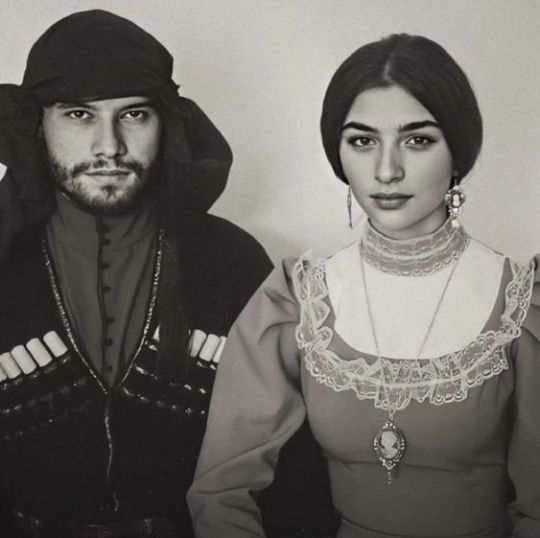
Abkhazians
Source: https://pinterest.com/pin/296674694219847603/
0 notes
Text

Abkhaz armed forces parade uniform I picked up recently. Formerly owned by a soldier out of Gudauta, Abkhazia. The uniform is basically untouched, but from some minor things and the smell you can tell this thing has been worn at least once.
The overall craftsmanship of the uniform is great, multiple layers, good quality materials used (for the most part), and very thick.
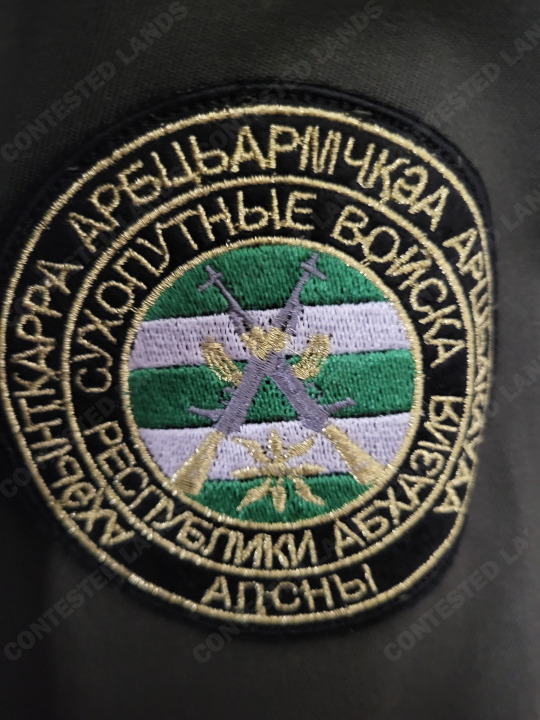

The patches are made quite well and sewn directly into the top most layer of the uniform, this uniform is from the ministry of defense, ground forces. The people my source buys stuff from don't typically like to explain what they do or who they are so the exact identity of the individual this came from will always remain a mystery for me.
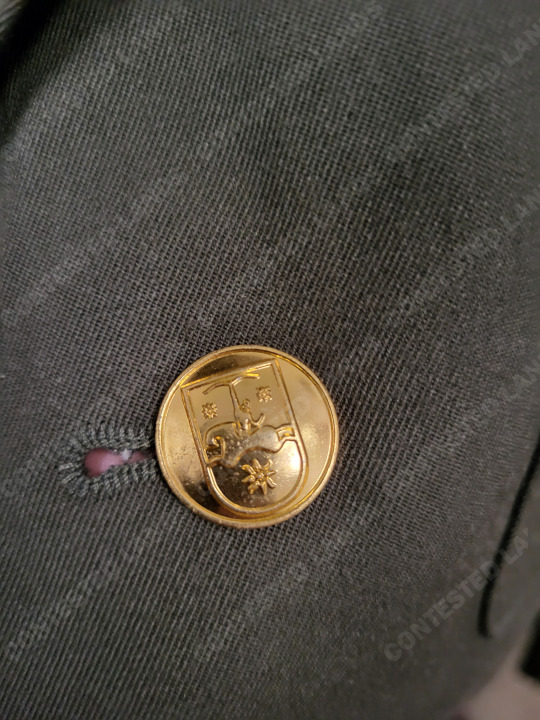
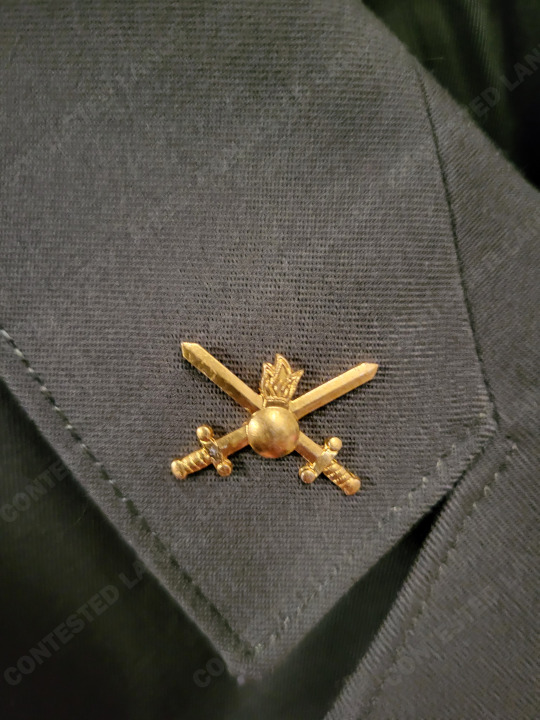
The metal the buttons and other tidbits are made from is noticeably lacking. I'm genuinely not sure what they're made out of. They feel lightweight and they feel cheap. They're also stamped out quite crudely. I fully believe this problem comes from a lack of resources in the country.
Overall, just happy to have the uniform. I have it on display at the moment (sorry DPR uniform) and it'll one day be the centerpiece of a larger display.
1 note
·
View note
Text
https://beachesinword.com/pit-sunda-beach-abkhazia-russia/
Pit Sunda Beach Abkhazia Russia
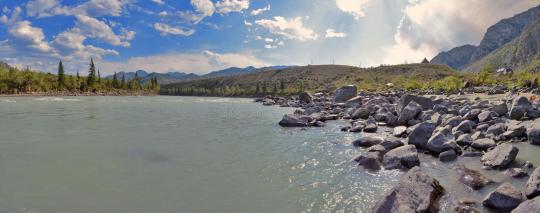

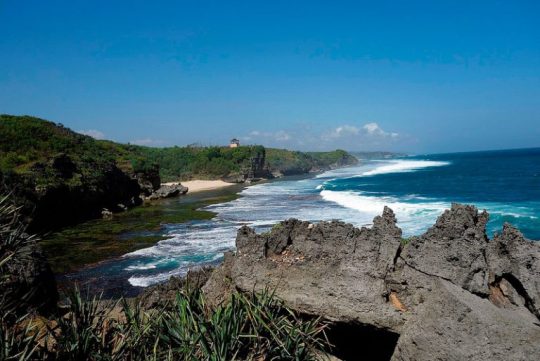

#abkhazia#georgia#circassian#sukhum#sukhumi#tbilisi#travel#nature#apsua#apsny#erkes#adige#gagra#cerkes#abhaz#caucasus#mountains#abkhaz#summer#blacksea#kabardey#l#f#love#russia#kafkas#mosaics#mosaic#kafkasya#graffiti
0 notes
Text
#Lukashenko#Alexander Lukashenko#Belarus#Bzhania#Aslan Bzhania#Abkhazia#Lukashenko sees Abkhazia as a potential seaside holiday destination#and tbf Abkhaz scenery is beautiful#Lukashenko Assad and Bzhania vacationing in some beautiful Abkhaz resort and of course having breakfast together#imagine it
1 note
·
View note
Photo
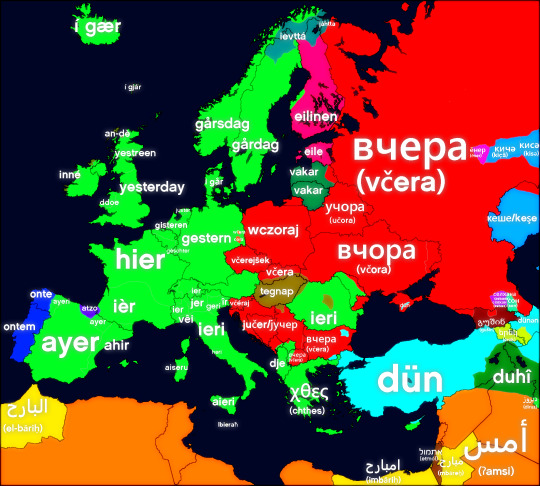
Word for "yesterday" around Europe.
by danielogiPL
Notes:
All of the languages are color coded by the roots of the word, which I have done research on. You might be wondering why a lot of the areas are green, despite them sounding way different; they all come from the Proto-Indo-European "dʰǵʰyés" (yesterday). Please note that I was not able to find if the Portuguese and Kurdish words are related to the green areas, so let me know if they actually are.
There are some languages where I couldn't find the translation, like Abkhaz, Gagauz, Karelian, Ossetian, Breton and Kalmyk. Please let me know any missing translations!
In contrast, many new languages have been added, including Scots (which I'm not sure how to draw the borders for, so I highlighted the rest of Scotland, please let me know how to draw the borders), Occitan, Aragonese, Ligurian, Piedmontese, Venetian, Frulian, Sardinian, Latin, Crimean Tatar and Sicilian. I also split Sorbian into Lower and Upper Sorbian, as these two are slightly different.
Multiple Arabic dialects use a different word than the standard version (including Cypriot Arabic, not shown on the map), though I was not able to find out if any more dialects use a different word. Let me know if they do!
112 notes
·
View notes
Text
Additional letters
This is a compilation of additional letters in the main scripts of the world.
Arabic script
The basic Arabic abjad has 28 letters: ح ج ث ت ب ا ص ش س ز ر ذ د ق ف غ ع ظ ط ض ي و ه ن م ل ك. Some languages have adapted it by including additional letters:
پ: Arabic, Balochi, Kashmiri, Khowar, Kurdish, Pashto, Persian, Punjabi, Sindhi, Urdu, Uyghur
ٻ: Saraiki, Sindhi
ڀ: Sindhi
ٺ: Sindhi
ٽ: Sindhi
ٿ: Rajasthani, Sindhi
ﭦ: Kashmiri, Punjabi, Urdu
ټ: Pashto
چ: Kashmiri, Kurdish, Pashto, Persian, Punjabi, Urdu
څ: Pashto
ځ: Pashto
ڊ: Saraiki
ډ: Pashto
ڌ: Sindhi
ڈ: Kashmiri, Punjabi, Urdu
ݙ: Saraiki
ڕ: Kurdish
ړ: Ormuri, Torwali
ژ: Kurdish, Pashto, Persian, Punjabi, Urdu, Uyghur
ڑ: Punjabi, Urdu
ږ: Pashto
ݭ: Gawri, Ormuri
ݜ: Shina
ښ: Pashto
ڜ: Moroccan Arabic
ڠ: Malay
ڥ : Algerian Arabic, Tunisian Arabic
ڤ: Kurdish, Malay
ڨ: Algerian Arabic, Tunisian Arabic
ک: Sindhi
ݢ: Malay
گ: Pashto, Kurdish, Kyrgyz, Mesopotamian Arabic, Persian, Punjabi, Urdu, Uyghur
ګ: Pashto
ڱ: Sindhi
ڳ: Saraiki, Sindhi
ڪ: Sindhi
ڬ: Malay
ڭ: Algerian Arabic, Kyrgyz, Moroccan Arabic, Uyghur
ڵ: Kurdish
لؕ : Punjabi
ݪ: Gawri, Marwari
ڽ: Malay
ڻ: Sindhi
ݨ: Punjabi, Saraiki
ڼ: Pashto
ۏ: Malay
ۋ: Kyrgyz, Uyghur
ۆ: Kurdish, Uyghur
ۇ: Kyrgyz, Uyghur
ۅ: Kyrgyz
ی: Pashto
ې: Pashto, Uyghur
ىٓ: Saraiki
ێ: Kurdish
ۍ: Pashto
ئ: Pashto, Punjabi, Saraiki, Urdu
ھ: Kurdish, Punjabi, Urdu, Uyghur
ے: Punjabi, Urdu
Cyrillic script
The basic Cyrillic alphabet includes 29 letters: А а Б б В в Г г Д д Е е Ж ж З з И и Й й К к Л л М м Н н О о П п Р р С с Т т У у Ф ф Х х Ц ц Ч ч Ш ш Щ щ Ь ь Ю ю Я я. Most languages use additional letters:
Ӕ ӕ: Ossetian
Ä ӓ: Hill Mari, Kildin Sámi
Ӑ ӑ: Chuvash
Ґ ґ: Belarusian, Rusyn, Ukrainian
Ӷ ӷ: Abkhaz
Ѓ ѓ: Macedonian
Г' г': Kurdish
Гъ гъ: Avar, Ossetian
Гь гь: Avar
Гӏ гӏ: Avar
Ғ ғ: Azerbaijani, Bashkir, Tajik, Uzbek
Дә дә: Abkhaz
Дж дж: Bulgarian, Ossetian
Дз дз: Bulgarian, Ossetian
Ђ ђ: Montenegrin, Serbian
Ѕ ѕ: Macedonian
Ҙ ҙ: Bashkir
Є є: Rusyn, Ukrainian
Ә ә: Abkhaz, Azerbaijani, Bashkir, Dungan, Kalmyk, Kurdish, Tatar
Ә' ә': Kurdish
Ё ё: Azerbaijani, Bashkir, Buryat, Chuvash, Dungan, Hill Mari, Khalkha, Kildin Sámi, Komi-Permyak, Kyrgyz, Meadow Mari, Ossetian, Russian, Rusyn, Tajik, Tatar, Ukrainian, Uzbek
Ӗ ӗ: Chuvash
Ӂ ӂ: Moldovan
Җ җ: Dungan, Kalmyk
Жә жә: Abkhaz
З́ з́: Montenegrin
Ӡ ӡ: Abkhaz
Ӡә ӡә: Abkhaz
І і: Avar, Belarusian, Rusyn, Ukrainian
Ї ї: Rusyn, Ukrainian
Ӣ ӣ: Tajik
Ҋ ҋ: Kildin Sámi
Ј ј: Azerbaijani, Kildin Sámi, Macedonian, Montenegrin, Serbian
Ҝ ҝ: Azerbaijani
Қ қ: Abkhaz, Tajik, Uzbek
Қь қь: Abkhaz
Ҡ ҡ: Bashkir
Ҟ ҟ: Abkhaz
Ҟь ҟь: Abkhaz
Ќ ќ: Macedonian
К' к': Kurdish
Къ къ: Avar, Ossetian
Кь кь: Abkhaz, Avar
Кӏ кӏ: Avar
Кӏкӏ кӏкӏ: Avar
Кк кк: Avar
Ӆ ӆ: Kildin Sámi
Љ љ: Macedonian, Montenegrin, Serbian
Ӎ ӎ: Kildin Sámi
Ӊ ң: Bashkir, Dungan, Kalmyk, Kildin Sámi, Kyrgyz, Tatar
Ҥ ҥ: Meadow Mari
Ӈ ӈ: Kildin Sámi
Њ њ: Macedonian, Montenegrin, Serbian
Ө ө: Azerbaijani, Bashkir, Buryat, Kalmyk, Khalkha, Kyrgyz, Tatar
Ö ӧ: Hill Mari, Komi-Permyak, Kurdish, Meadow Mari
Ԥ ԥ: Abkhaz
П' п': Kurdish
Ҧ ҧ: Abkhaz
Пъ пъ: Ossetian
Ҏ ҏ: Kildin Sámi
Р' р': Kurdish
Ҫ ҫ: Bashkir, Chuvash
С́ с́: Montenegrin
Ҭ ҭ: Abkhaz
Ҭә ҭә: Abkhaz
Т' т': Kurdish
Тә тә: Abkhaz
Тъ тъ: Ossetian
Тӏ тӏ: Avar
Ћ ћ: Montenegrin, Serbian
Ӱ ӱ: Hill Mari, Meadow Mari
Ӳ ӳ: Chuvash
Ў ў: Belarusian, Dungan, Uzbek
Ӯ ӯ: Tajik
Ү ү: Azerbaijani, Bashkir, Buryat, Dungan, Kalmyk, Khalkha, Kyrgyz, Tatar
Ҳ ҳ: Abkhaz, Tajik, Uzbek
Хъ хъ: Ossetian
Хь хь: Abkhaz
Хӏ хӏ: Avar
Ҳ ҳ: Abkhaz
Ҳә ҳә: Abkhaz
Һ һ: Azerbaijani, Bashkir, Buryat, Kalmyk, Kildin Sámi, Kurdish, Tatar
Һ' һ': Kurdish
Ҵ ҵ: Abkhaz
Ҵә ҵә: Abkhaz
Цә цә: Abkhaz
Цъ цъ: Ossetian
Цц цц: Avar
Цӏ цӏ: Avar
Цӏцӏ цӏц: Avar
Џ џ: Abkhaz, Macedonian, Montenegrin, Serbian
Џь џь: Abkhaz
Ҹ ҹ: Azerbaijani
Ҷ ҷ: Azerbaijani, Tajik
Ч' ч': Kurdish
Чъ чъ: Ossetian
Чӏ чӏ: Avar
Чӏчӏ чӏчӏ: Avar
Ҽ ҽ: Abkhaz
Ҿ ҿ: Abkhaz
Шь шь: Abkhaz
Шә шә: Abkhaz
’: Belarusian, Ukrainian
Ъ ъ: Azerbaijani, Bashkir, Chuvash, Dungan, Hill Mari, Khalkha, Komi-Permyak, Meadow Mari, Ossetian, Russian, Rusyn, Tajik, Tatar, Uzbek
Ҍ ҍ: Kildin Sámi
Ы ы: Abkhaz, Azerbaijani, Bashkir, Belarusian, Buryat, Chuvash, Dungan, Hill Mari, Khalkha, Kildin Sámi, Komi-Permyak, Kyrgyz, Meadow Mari, Moldovan, Ossetian, Russian, Tatar
Ӹ ӹ: Hill Mari
Ҩ ҩ: Abkhaz
Э э: Azerbaijani, Bashkir, Belarusian, Buryat, Chuvash, Dungan, Hill Mari, Kalmyk, Khalkha, Kildin Sámi, Komi-Permyak, Kyrgyz, Kurdish, Meadow Mari, Moldovan, Ossetian, Russian, Tajik, Tatar, Uzbek
Ӭ ӭ: Kildin Sámi
Ԛ ԛ: Kurdish
Ԝ ԝ: Kurdish
Devanagari script
The basic Devanagari abugida includes 48 letters: अ आ इ ई उ ऊ ऋ ए पॅ ऐ ओ औ अं अः ॲं क ख ग घ ङ ह च छ ज झ ञ य श ट ठ ड ढ ण र ष त थ द ध न ल स प फ ब भ म व. But some languages add additional ones:
ॠ: Sanskrit
ऌ: Sanskrit
ॡ: Sanskrit
ॲ: Marathi
ऑ: Marathi
क़: Hindi
ख़: Hindi
ग़: Hindi
ॻ: Saraiki, Sindhi
ज़: Hindi
ॼ: Saraiki, Sindhi
झ़: Hindi
ॾ: Saraiki, Sindhi
फ़: Hindi
ड़: Hindi
ढ़: Hindi
ॿ: Saraiki, Sindhi
ळ: Gharwali, Konkani, Marathi, Rajasthani, Sanskrit
ॸ: Marwari
Geʽez script
The basic Geʽez abugida consists of 217 letters: ሀ ሁ ሂ ሃ ሄ ህ ሆ ለ ሉ ሊ ላ ሌ ል ሎ ሏ ሐ ሑ ሒ ሓ ሔ ሕ ሖ ሗ መ ሙ ሚ ማ ሜ ም ሞ ሟ ፙ ሠ ሡ ሢ ሣ ሤ ሥ ሦ ሧ ረ ሩ ሪ ራ ሬ ር ሮ ሯ ፘ ሰ ሱ ሲ ሳ ሴ ስ ሶ ሸ ሹ ሺ ሻ ሼ ሽ ሾ ሷ ቀ ቁ ቂ ቃ ቄ ቅ ቆ ቋ በ ቡ ቢ ባ ቤ ብ ቦ ቧ ተ ቱ ቲ ታ ቴ ት ቶ ቷ ቸ ቹ ቺ ቻ ቼ ች ቾ ኀ ኁ ኂ ኃ ኄ ኅ ኆ ኋ ነ ኑ ኒ ና ኔ ን ኖ ኗ አ ኡ ኢ ኣ ኤ እ ኦ ኧ ከ ኩ ኪ ካ ኬ ክ ኮ ኳ ወ ዉ ዊ ዋ ዌ ው ዎ ዐ ዑ ዒ ዓ ዔ ዕ ዖ ዘ ዙ ዚ ዛ ዜ ዝ ዞ ዟ የ ዩ ዪ ያ ዬ ይ ዮ ደ ዱ ዲ ዳ ዴ ድ ዶ ዷ ገ ጉ ጊ ጋ ጌ ግ ጎ ጓ ጠ ጡ ጢ ጣ ጤ ጥ ጦ ጧ ጰ ጱ ጲ ጳ ጴ ጵ ጶ ጷ ጸ ጹ ጺ ጻ ጼ ጽ ጾ ጿ ፀ ፁ ፂ ፃ ፄ ፅ ፆ ፈ ፉ ፊ ፋ ፌ ፍ ፎ ፏ ፚ ፐ ፑ ፒ ፓ ፔ ��� ፖ ፗ. Certain languages use additional letters:
ቈ ቊ ቋ ቌ ቍ: Amharic, Bilen, Tigrinya
ኈ ኊ ኋ ኌ ኍ: Amharic, Bilen
ኰ ኲ ኳ ኴ ኵ: Amharic, Bilen, Tigrinya
ጐ ጒ ጓ ጔ ጕ: Amharic, Bilen, Tigrinya
ቐ ቑ ቒ ቓ ቔ ቕ ቖ: Amharic, Bilen, Harari, Tigre, Tigrinya
ቘ ቚ ቛ ቜ ቝ: Tigrinya
ቨ ቩ ቪ ቫ ቬ ቭ ቮ: Amharic, Bilen, Harari, Tigrinya
ⶓ ⶔ ጟ ⶕ ⶖ: Bilen
ኘ ኙ ኚ ��� ኜ ኝ ኞ: Amharic, Bilen, Harari, Tigrinya
ኸ ኹ ኺ ኻ ኼ ኽ ኾ: Amharic, Harari, Tigrinya
ዀ ዂ ዃ ዄ ዅ: Amharic, Bilen, Tigrinya
ዠ ዡ ዢ ዣ ዤ ዥ ዦ: Amharic, Bilen, Tigre, Tigrinya
ጀ ጁ ጂ ጃ ጄ ጅ ጆ: Amharic, Bilen, Harari, Tigrinya
ጘ ጙ ጚ ጛ ጜ ጝ ጞ: Bilen, Tigre
ጨ ጩ ጪ ጫ ጬ ጭ ጮ: Amharic, Bilen, Harari, Tigrinya
Hebrew script
The basic Hebrew abjad has 22 letters: א ב ג ד ה ו ז ח ט י ך/כ ל ם/מ ן/נ ס ע ף/פ ץ/צ ק ר ש ת. Yiddish adds two more:
וו וי יי: Yiddish
בֿ: Yiddish
Latin script
The basic Latin alphabet consists of 26 letters: A a B b C c D d E e F f G g H h I i J j K k L l M m N n O o P p Q q R r S s T t U u V v W w X x Y y Z z. Many languages add special characters:
Countries between parentheses are added to distinguish between different languages that have the same name.
Æ æ: Danish, English, Faroese, Icelandic, Kawésqar, Lule Sámi, Norwegian, Southern Sámi, Yaghan
Ɑ ɑ (Latin alpha): Duka, Fe’fe’, Mbembe, Mbo, Tigon
Ð ð (eth): Anii, Elfdalian, Faroese, Icelandic
Ǝ ǝ (turned E): Anii, Bangolan, Bissa, Bura, Kanuri, Kposo, Lama, Lukpa, Ngizim, Tamahaq, Tamasheq, Turka, Yom
Ə ə (schwa): Awing, Bafut, Bulu, Daba, Dazaga, Dii, Ewondo, Fe’fe’, Gude, Kamwe, Kasena, Kemezung, Kpelle, Lyélé, Mada, Makaa, Manengumba, Mfumte, Mofu-Gudur, Mundang, Mundani, Ngas, Nso, Nuni, Parkwa, Tarok, Teda, Temne, Vengo, Vute, Yom, Zulgo-Gemzek
Ɛ ɛ (Latin epsilon): Abidji, Adele, Adjukru, Aghem, Ahanta, Ait Seghrouchen, Ait Warain, Aja (Benin), Akan, Anii, Anyin, Ayizo, Bafia, Bafut, Baka (Cameroon), Bambara, Baoulé, Bariba, Basa (Cameroon), Beni Snous, Bhele, Bissa, Boko, Busa (Nigeria), Central Atlas Tamazight, Cerma, Chakosi, Dagaare, Dan, Dangme, Dendi, Dii, Dinka, Djerbi, Duala, Dyula, Ewe, Ewondo, Ghomara, Iznasen, Kabyle, Kako, Kemezung, Kenyang, Kposo, Kyode, Lika, Lingala, Lupka, Maasai, Mandi (Cameroon), Manenguba, Mangbetu, Matmata, Mbelime, Medumba, Mzab-Wargla, Nawdm, Ngiemboon, Ngomba, Noni, Nuer, Sanhaja de Srair, Shawiya, Shenwa, Shilha, Tarifit, Tem, Tigon, Turka, Yoruba, Zuwara
Ɣ ɣ (Latin gamma): Air Tamajaq, Dagbani, Dinka, Ewe, Kabiye, Kabyle, Kpelle, Kposo, Lukpa, Tamahaq, Tamasheq, Tawellemet, Wakhi
ɤ (ram’s horn/baby gamma): Dan, Goo
I ı (Dotless): Crimean Tatar, Gagauz, Kazakh, Turkish
Ɪ ɪ (small capital): Kulango, Lomakka
Ɩ ɩ (iota): Bissa, Kabiye
Kʼ ĸ (kra): Inuttitut
Ł ł (L with stroke): Gwich’in, Iñupiaq, Kashubian, Navajo, Polish, Silesian, Sorbian, Venetian
Ŋ ŋ (eng): Aghem, Iñupiaq, Kemezung, Lukpa, Mandi (Cameroon), Medumba, Mundani, Nawdm, Ngiemboon, Ngomba, Noni, Northern Sámi, Nuer, Skolt Sámi, Tem, Tigon, Wuzlam
Ɔ ɔ (open O): Aghem, Akan, Bafia, Baka, Bambara, Baoulé, Bariba, Bassa, Boko, Dii, Dinka, Duala, Dyula, Ewe, Ewondo, Kako, Kemezung, Kposo, Lika, Lingala, Maasai, Mandi (Cameroon), Manenguba, Mangbetu, Mbelime, Medumba, Mundani, Nawdm, Ngiemboon, Ngomba, Nuer, Tem, Tigon, Turka, Yoruba
Œ œ: French, Lombard
Ʀ ʀ (small capital R): Alutiiq
ẞ ß (Eszett): German
Þ þ (thorn): Icelandic
Ɥ ɥ (turned H): Dan
Ʊ ʊ (upsilon): Anii, Anyin, Foodo, Lukpa, Tem, Yom
Ʌ ʌ (turned V): Dan, Ch’ol, Oneida, Temne, Tepehuán, Wounaan
Ʒ ʒ (ezh): Aja, Dagbani, Laz, Skolt Sámi
Ɂ ɂ (glottal stop): Chipewyan, Ditidaht, Dogrib, Halkomelem, Kutenai, Lushootseed, Nuu-chah-nulth, Slavey, Thompson
Ꞌ ꞌ (saltillo): Central Sama, Mexicanero, Mi'kmaq, Nahuatl, Nawat, Rapa Nui, Tlapane
Tibetan script
The basic Tibetan abugida is formed by 34 letters: ཀ ཁ ག ང ཅ ཆ ཇ ཉ ཏ ཐ ད ན པ ཕ བ མ ཙ ཚ ཛ ཝ ཞ ཟ འ ཡ ར ལ ཤ ས ཧ ཨ ཨི ཨུ ཨེ ཨོ. Balti uses four additional characters:
ཫ: Balti
ཬ: Balti
ཁ༹: Balti
ག༹: Balti
#langblr#lingblr#english#hindi#arabic#french#russian#urdu#german#punjabi#marathi#turkish#persian#yoruba#polish#ukrainian#uzbek#sindhi#pashto#saraiki#malay#kurdish#bambara#dyula#azerbaijani#kazakh#hungarian#hebrew#tibetan
67 notes
·
View notes
Text
Controversial origin of Halime Sultan
For many years the life of Halime Sultan had been a mystery. Not only her place of birth,but even her period in harem and tenure as Valide was unknown. Many thought the mother of Mahmud was killed along with him, some said she survived, but was banished. Even her Muslim name was unknown and was mentioned as fulane sultan for quite a long time, until it was found that she was called Halime sultan.

Like almost everything about her life her origin was mostly a mystery, However today it is accepted that she was from Caucasia, particularly from Abkhazia. However, that doesn't make everyone clear about her ethnicity. Confusion mainly comes because the term "Abkhazian" might include several people: Native Abkhazians, who settled here in ancient times, there were two major tribes in Abkhazia ubykh-abkhazs(genetically closer to Circassians) and Georgian-abkhazs(almost genetically identical to western Georgians). However, the number of people in each tribe varied from time to time, however generally Georgian-abkhazians were more loosely-settled, mainly because during the rise of civilization during iron age,pre-classical and classical antiquity, when Abkhazia was part of first Kingdom of Colchis and then kingdom of Egrisi(lazica), both were kartvelian kingdoms, created after unification of native Kartvelian tribes that lived there, two kingdom covered teritories from todays Abkhazia to some parts of eastern Anatolia. Therefore, Georgian-abkhazs promoted that time. In 697, the kingdom of Egrisi devided, into the de-facto kingdom of Abkhazia from 697-780's and the official kingdom of Abkhazia from early 780's to 1008 that included not only modern Abkhazia,but whole teritories of modern eastern Georgia and parts of Turkey and Russia . The official language of the pre 780's kingdom was Georgian, was ruled by Georgian-abkhaz Nobel families and was almost entirely settled by Georgians. After the 780s it was even more dominated by Georgians and that was time, when on the territories of the modern days republic of Abkhazia along with Georgian-abkhazs and ubykh-abkhazs western Georgians actively started to settle. From 1008 to 1490's it became part of the united kingdom of Georgia. After the 1490s it was invaded by Mongolians and divided into western and eastern parts. That is a period when Circassians slowly started to enter Abkhazian territories. Now back to the topic, up until late sixteenth century Abkhazia was Georgian dominated land, in 1570's same time as ottomans, many Circassian tribes started infiltrating Abkhazia and unlike peaceful natives, started to invade homes of weakened Georgians and as a result during the climax of invasion in 1580-90's mass slave trade burst out and thousands of Georgian-abkhaz and mingrelian girls found themselves in ottoman slave market.
Halime sultan was born around 1568-70, therefore in 1580-90's she could have been anywhere from 10-12 to 20-22 years old, considering Mehmed III received his sanjak in 1583, Halime was likely gifted to him that or next year, at very least she was already favourite in 1586, so she was bought quite before that time. So perhaps she was freshly brought little Georgian in the Ottoman slave market? Everything in this theory fits, her age, statistics, fact that slave markets were flooded by Georgians suggest that when we say that Halime was Abkhaz, it means Georgian-abkhaz, not Ubykh-abkhaz and definitely not non-native Circassians.

#history#historical drama#16th century#magnificent century#magnificent century kosem#mc: kosem#ottoman empire#ottomanladies#historical events#georgia#abkhazia#Georgian history#history of Georgia#halime sultan#ottoman sultanas#sultanate of women#sultanas#circassian#women in politics#historical figures#historyedit
28 notes
·
View notes
Note
Linguistically, Azerbaijani, Armenian, Kartvelian (Georgian), and Abkhaz aren't even in the same language families! Like the highest level groupings - obviously culture is more than just language but that's a big difference
I was thinking that, which is why I wasn't confident enough to say it in the post--I know Azerbaijan speaks a Turkic language, but I wasn't sure whether that was a product of invasion without actual replacement, which might not change the local culture that much, or migration, which might bring some very different customs. then again, similar environments might reinforce similar cultures no matter what the origin.
I'm curious how four extremely different languages wound up in such close proximity, but every time I encounter that region in history books, it's because it was too mountainous to invade--so maybe that geography is also a barrier to cultural blending.
I should just read up on this, it's long past time.
7 notes
·
View notes
Note
There's something so gross about the way I've seen Vietnamese, Hmong, Abkhaz, Inuit, Jewish and Dari people being told on Amino by white people with no connection to those cultures "you're not really 'kin, you're just projecting onto something from your culture". White people gatekeeping POC and marginalized cultures out of being "really otherkin/alterhuman" is so fucked up and racist/xenophobic imo.
YEAH.
64 notes
·
View notes
Text
On September 27 of 1993, Sokhumi, a Georgian city fell to the Abkhaz separatists backed by Russia. Thousands died and 50,000 had to flee their homes. Almost 30 years of pain, loss and suffering. Yes, I blame Russia because without Russia's involvement, many would still be alive.



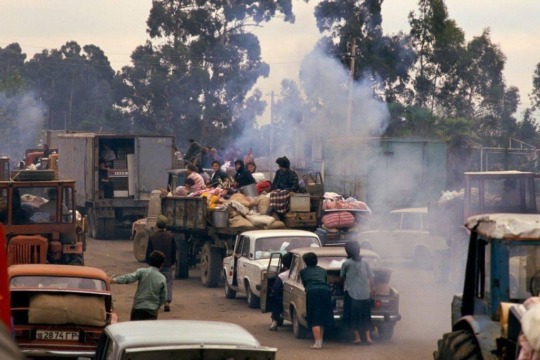
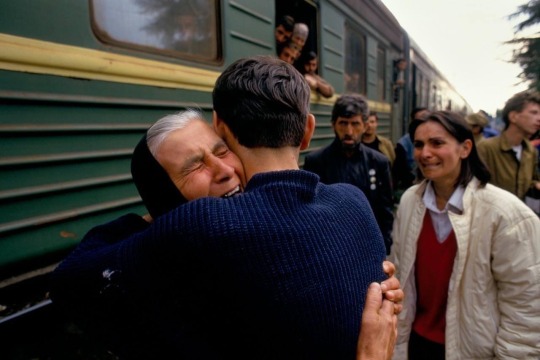

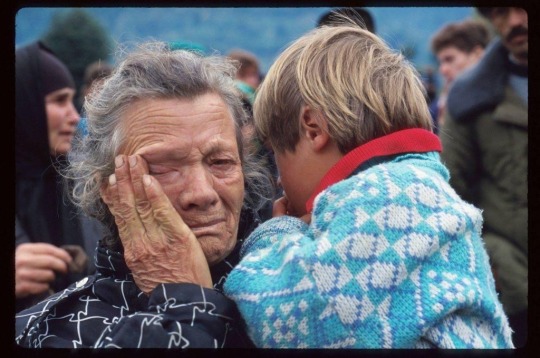

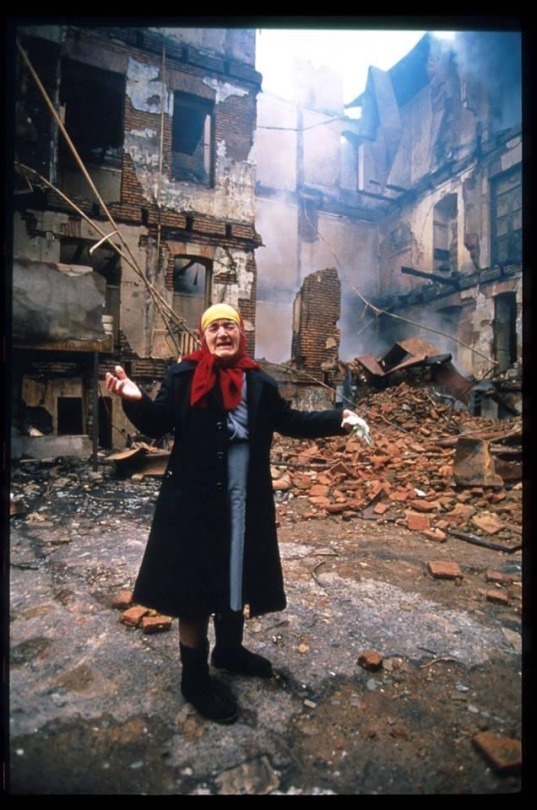
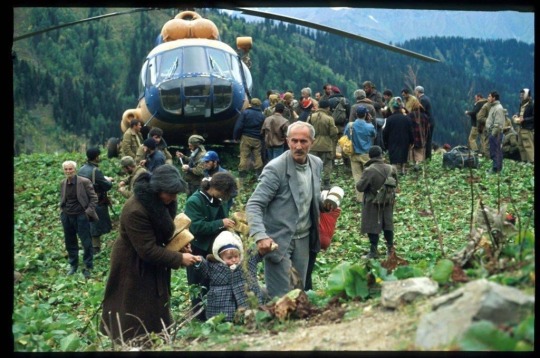
https://en.m.wikipedia.org/wiki/War_in_Abkhazia_(1992–1993)
More info on ethnic cleansing of Georgians in Sokhumi
#Georgia#Russia#Sokhumi#all the pain that georgians have been through#one day we will dance on the ashes of our enemies#war of abkhazia#mine
69 notes
·
View notes